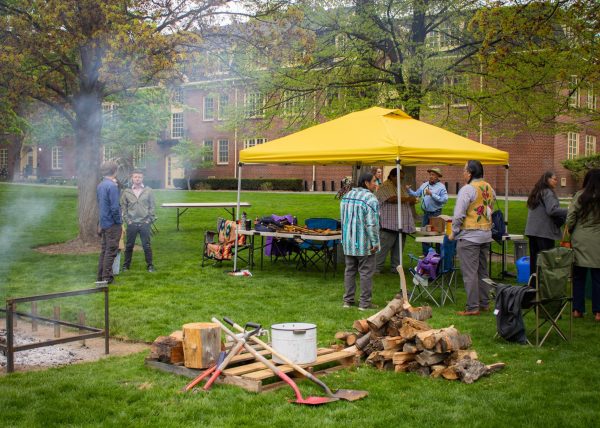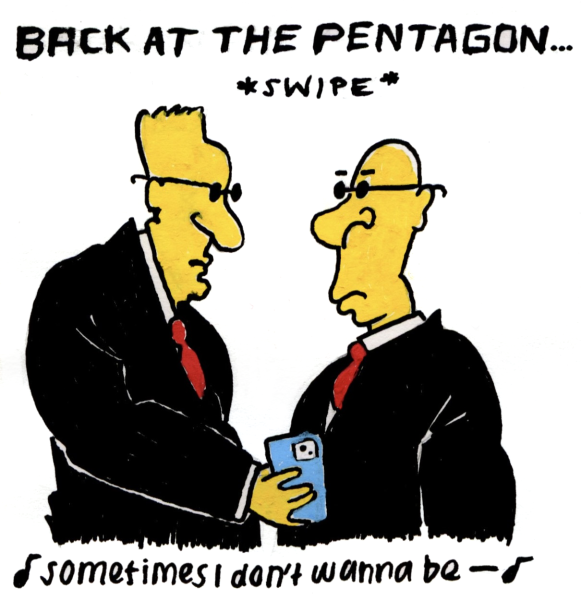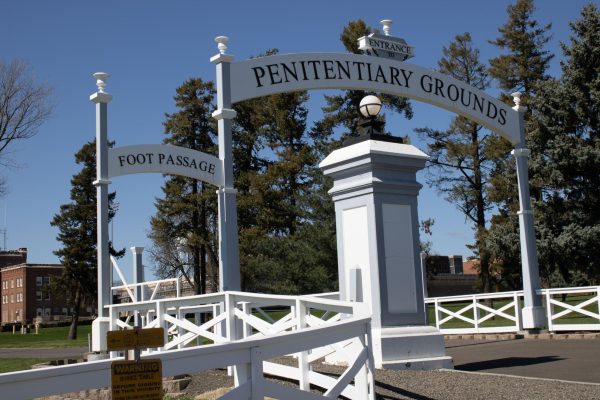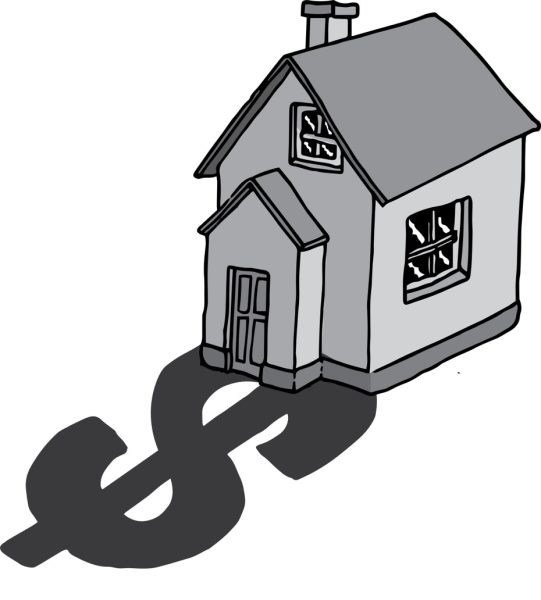Behind Bars, in Our Backyard
April 13, 2017
It’s easy to see prisons as an anomaly in our cute and charming Walla Walla. The state penitentiary can easily just be a set of bright lights you see while driving to the wheat fields, while the Two Rivers Correctional Institution and Eastern Oregon Correctional Institution are unheard of for many Whitman students. However, clubs and classes have made an effort to engage with these institutions in a variety of ways, from theater to meditation to collaborative academic projects.
Theater Brings Together Students, Prisoners
As a student in Jessica Cerullo’s beginning acting class, first-year Chloe Holaso took on a new role: an audience member in a small, claustrophobic room stuffed with security guards and prisoners. There she watched as inmates from Two Rivers Correctional Institution in Umatilla, Oregon performed “Metamorphoses,” a play by Mary Zimmerman, for her class. The charity, Open Hearts Open Minds, helps inmates put on plays like this annually. Scattered among the audience were relatives of inmates and former inmates who had come to support their friends.
“It wasn’t like [you were being ushered into] a Broadway production. It’s more of like, here are your plastic chairs. And you sit in your plastic chairs and kind of look around at your classmates like, ‘Uh what?’ and then you look at the officers that are looking back and you and like, ‘Uh I wasn’t looking!” Holaso laughed.
This new, strange experience was exactly what professor Cerullo was aiming to provide.
“[Professor Cerullo] was a lot about putting yourself into something new and making it feel normal,” Holaso said. “So I think that’s why she had our class go to the correctional institution because that was a whole new experience.”
As a person who had never even seen a prison before, the only conception Holaso had of prison was derived from the media.
“When the bus drove up … I was kind of like, ‘Oh, this looks really happy. There’s not grey buildings, or wolves, or spiney wire everywhere,’” Holaso said.
As she walked through the security building, down the hallways of another building, Holaso thought that this would be like any other show performed at a theater. She wasn’t acclimated to the reality of the prison until she stepped into the room.
“Okay: here’s the first wave of shock. These are actually prisoners, I’m not just seeing a show … I look around the room and had more of a reality check,” Holaso said. Holaso’s perception started to align more with the archetypal prison image of gruff, tough men. In terms of theatricality, her expectations were low.
But then, the inmates started singing.
“At first it seemed kind of absurd and almost wrong, like dystopian … when the bad guys are singing about good things and it seems like it’s just a façade, but definitely the creepiness of it wore off and we all just started to get into the vibes that they were creating,” Holaso said. “Each one of them were beaming. They all seemed so proud and happy to be putting on this show.”
The song, written and composed by the inmates, was about love, peace and finding community in each other.
“It was a heart-melting kind of thing,” Holaso said.
The play was reminiscent of middle school: goofy and comical. The feeling of uneasiness that accompanied the presence of security guards dissipated and the environment became more comfortable as time went on.
“None of them looked scary. They kind of all just looked like your crazy uncle or your crazy grandpa,” Holaso said.
Holaso’s first thought was that the performance was cute. However, when she talked to the inmates, it got deeper than that.
“It’s not so cute. They really have sad lives that they wish they could change,” Holaso said. “It kind of reminded me about those people in ‘Tangled,’ all the thugs [singing] ‘I have a dream, I have a dream.’ And they all get their dreams, but these are people that are not going to.”
Talking to an inmate, person-to-person, cultivated a sense of empathy.
“I began to see these people … as real, passionate humans like myself,” Holaso said. “Then it turned into this huge moving sadness. Wow. This person [was] in high school and did theater just like I did, and fell into this other path and made some really poor choices that basically messed up their dreams for them. That could easily be me.”
By working together, these inmates developed the sense of community that characterizes the theater troupes that they don’t get a chance to be in while in prison.
“It was kind of like their own community and a window into what could be,” Holaso said.
Through theater, the prisoners therapeutically transform themselves into someone completely new and connect with a lifestyle beyond bars.
“You get to experience and sort of imagine and pretend these new lifestyles that you want to be,” Holaso said. “You can be anyone you want to be when you’re acting.”
Meeting Human to Human through Meditation
Sonja Aikens, administrative assistant of the Whitman Intercultural Center, practices mindfulness in a place where it can be difficult to maintain a peaceful state of mind: the Walla Walla State Penitentiary.
Eight years ago, an inmate sent a letter to the local community Buddhist group, Walla Walla Dharma Sangha, asking for volunteers to meet with the inmate Buddhist group. Thus, two groups with different lives that share a Buddhistic lens in which to view this life, collided.
“We were asking those questions and looking for answers, and so that definitely gave common ground,” Aikens said. “Anytime that you meet a person as a human being, you’re gonna discover a commonality of things. It could be anyone.”
Since 2009, volunteers from Walla Walla Dharma Sangha have visited the penitentiary nearly every Wednesday morning to meditate with five different groups at various custody levels, alternating each week so that the volunteers visit each group twice per month. Currently, there are six community group volunteers. Over the years, there have been ten Whitman students, mainly recruited from the Meditation Club, who have accompanied the community group.
Jump-started by the five inmates who initially sent the letter, the meditation group has continued to be directed by the inmates. Aikens describes the group as very non-hierarchical.
“Sonja really tries to make it be their thing; they have ownership of the experience,” senior Hannah Lufkin said. “The volunteers are just there so that the prison actually allows them to meet, but she really wants it to be their own creation and guiding what they want.”
Since Aikens believes that everyone is always a beginner when it comes to meditation, the community members and inmates are on a level playing field.
This sense of ownership is important to the inmates, as the majority of their interactions are characterized by an imbalance of power.
“To have just a regular conversation with someone who is kind of a peer is very unusual circumstance for them. They don’t get that,” Aikens said. “From someone coming in from outside, to just treat them as a normal human being, that is an incredibly precious thing to happen. They remember us.”
Conversation is integrated in their meditation sits, along with Chi-Gong and Tai-Chi videos, yoga, movement exercises and shared readings.
These discussions have helped shatter stereotypes that media has constructed. For Aikens, the archetypical scary prisoners turned into intelligent, funny guys.
“I remember just seeing them … they’re pretty tough-looking and I was very worried about how to connect to them,” Aikens said. “That was interesting because that particular group of guys was a phenomenal group of guys, and me and the other volunteers [meditated] with them for probably three years.”
Not only are these guys well-rounded, but they are also inspiring.
“I just have the utmost respect for people in there who can maintain a sense of compassion, who can maintain their sanity,” Aikens said. “A lot of them have such a great sense of humor. They are able to maintain a sense of who they are even when they are in this institution that tries to take everything away from you.”
While they do this on their own, meditation helps.
“This idea of mindfulness is being aware of your emotions, and there’s a way that it can really help inmates through difficult emotions,” Lufkin said. “It was definitely a coping mechanism.”
While inmates live in a grim, institutionalized environment, they manage to see the light within themselves through meditation.
“Would I really be able to stand up to that sort of difficulty? I don’t know, I don’t know if I would. I might just sit in my cell crying all the time,” Aikens said.
“I walk out and I think about things like: I can touch grass, I can touch a flower, I can look up at the sky. I can do all these things that they can’t do,” Aikens added. “It made me very aware of the preciousness of freedom, of being in an environment that is pleasant and wholesome and healthy.”
Aikens mentioned that just as we see others like us as intrinsically good, the inmates are also intrinsically good, even if it has been obscured by their situation.
“It has been really validating to me about the human spirit. Underneath a lot of very tough exterior, there is a basic goodness in there,” Aikens said.
Criminal Justice
Sophomore Mira Skladany had several opportunities to engage with inmates, first through her Rhetoric and Incarceration class in the fall (that she is taking again this spring) taught by Heather Hayes inside the state penitentiary, and second through her Punishment and Responsibility class taught by Mitch Clearfield at Whitman and supplemented by a visit to the State Pen and Eastern Oregon Correctional Institution.
Like most, her perception of the prisons was heavily formed by prison TV shows. She had never directly interacted with prisons before going on an incarceration-based Whitman spring break service trip.
“I was comfortable with how uncomfortable it was. I was naive, but I was aware of that naivety,” Skladany said.
In her Rhetoric and Incarceration class, Skladany has experienced a sense of understanding amongst her inmate classmates through a shared passion for academics and social justice, mitigating that initial fear.
“[I] am able to have productive conversations and humane conversations,” Skladany said. “I think we’re creating a better world in which there is more understanding between people who have had very different life experiences, and I think that is something that our society could have more of.”
In addition to this course, Skladany is taking Punishment and Responsibility this semester, a philosophy course that meshes very well with Rhetoric and Incarceration.
“Philosophy and law are greatly intertwined. Our readings of philosophy greatly influence our readings of the law,” Skladany said.
First-year Kimberly Taylor also signed up for the course, which served as an open door to the world of criminal justice for her.
“During the first couple weeks of class, it was obvious that there are so many flaws within the system,” Taylor said.
In the course, students read and discuss different interpretations and views of the criminal justice system. The discussions leading up to the visits coupled with the visit itself changed her views a lot.
“What really stood out to me was how different someone’s prison experience could be based on which prison they go to and what resources they are able to use once they inside the prison,” Taylor said.
The Eastern Oregon Correctional Institution has a creative arts program, started in March 2001, that gives inmates woodworking and cast iron projects. They also produce “Prison Blues,” an internationally marketed denim clothing line. At the State Penitentiary, Taylor noticed furniture building, hydroponics, vermiculture (using worms to decompose organic food waste) and the making of license plates.
“They were gaining valuable skills. There was always an inmate who was the lead of the projects and teaching other inmates to do it, and they were really seeing the benefits of their work,” Taylor said.
It is easy to think that all this busyness might at least somewhat compensate for their lack of freedom.
“You think oh wow, this is so good, this is really, really helping to have a positive outlet for them to use their time so they’re not just sitting in their cells,” Taylor said. “But they’re making such little amounts [of money] for the amount of work that they’re doing, so that doesn’t sound fair at all.”
A lot of activities are monotonous. No matter how much effort goes into providing activities for prisoners, the reality of enclosing humans behind bars is impossible to overcome.
“It doesn’t help to have people locked away for a super, super long time and not helping society as a whole improve,” Taylor said. “If you’re deciding to lock people up, you are trying to limit them. You’re not trying to have them grow as much as possible because that’s not an environment that you put someone in when you want them to grow.”
Skladany emphasized the importance of actually stepping inside of these institutions in order to further understand them.
“Our society functions in a way in which you do not have any impression on what a prisoner is like or about what is going on inside a prison unless you’ve been to a prison,” Skladany said.
Both Whitman and the State Penitentiary occupy space in Walla Walla, profoundly affecting the surrounding community. It’s important to understand the overlap of impact.
“We are two institutions that operate within five miles of each other, have dramatically impacted the community in different ways, have facilitated our economy and have impacted our community members,” Skladany said. “One of the most tangible ways in which to interact with the community is to look towards other institutions that are influencing the community in similar ways. We need to be bursting the bubble of Whitman College and interacting with those … who have had different walks of life.”











Willard Timberman • Apr 15, 2017 at 9:29 pm
This is a great article and I am impressed with the depth of understanding that the students have been able to grasp about the inmates situation and circumstances . What is missing is a discussion about the families of the inmates and the devastating impact it has on the loved ones that are treated as the forgotten members of the circumstances that they to must have to live with just as the inmates must on a daily basis. I speak from experience as my son is at Two Rivers Correctional Institution and I head up a support group for families under the CURE Oregon leadership. It is a very steep learning curve for all of the family members to come to grips with in order for them to realize all of hoops they must jump through just to visit with their loved ones. We, our support group, tries to help smooth out the way for them as much as we can to help them gain access and to follow all of the rules so as to keep in touch with those that are incarcerated. l doubt that most people who have not gone through this experience has any idea what goes on within the prison walls.
Richard Marcus • Feb 7, 2018 at 3:55 pm
Dear William, According to his counselor @ Coffee Creek our son will probably be sent to 2 Rivers in the next week or so. My wife and I would be so grateful if we could have any information you can share with us about the facilities. I went to a CURE meeting in Beaverton several months ago The people at the meeting were some of the warmest , supportive people I’ve ever met but there seemed to be confusion about info and even when the were meeting next. Maybe it was me. Anyway, could we connect we can ask questions? Thanks, Richard Marcus